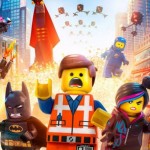One of the most dangerous phrases for Christians who are striving to think biblically about culture is, “it’s just a _______.” The trump card against all criticism, this phrase is used to justify a creation by simply appealing to its existence: it’s just a song, it’s just a book, it’s just a sitcom, it’s just a cartoon, as if somehow any demand for excellence is inappropriate (or elitist) when it comes to pop culture. The practical result of “just a” thinking is that we can justify any saccharine, fatty, tasteless, shallow creation, keeping both the audience and the artist from any kind of accountability for excellence. This last week I saw two CGI movies which came highly recommended, Kung Fu Panda and WALL-E. While both films received relatively good reviews, only one told a compelling story, the other was filled with tired cliches and jokes interrupted with marketing moments. One was a genuinely well-made film, worthy of praise and the other could only be explained with the phrase, “it’s just a movie.”
Pixar is treated by many as the production company that can do no wrong since Toy Story. While I have always enjoyed Pixar’s films (except Cars, but lets not talk about that), I felt that they were a bit overrated. Sure, The Incredibles was fun and Finding Nemo was funny, but it seemed like these stories had room for a bit more depth, something to chew on after I left the theaters, but all I was really left with was the spectacle. After viewing Pixar’s latest film, WALL-E, I have happily jumped aboard the Pixar Bandwagon Express. Although the CG was stunning and the character designs were cute, the element that pushed me on board was the way I was presented a story about two robots that sincerely and compellingly evoked and celebrated what Francis Schaeffer would call our “manisheness,” our imago dei.
As the last functioning robot on earth, WALL-E’s task is to clean up a world covered in trash. In the process, he becomes fascinated with human culture and longs for a relationship. He collects artifacts from the wasted world that interest him: songs, trinkets, classic musicals. For company he befriends a cockroach and later falls in love with EVE, a robot sent to find signs of life on Earth. What was so remarkable about this story to me was that it was not ironic. Consider this plot:
The last robot on Earth gains a sense of wonder about the world by sorting through trash. He falls in love with another robot, who then adopts his sense of wonder, setting off a chain of events which leads to the renewal of human culture and civilization.
Can you imagine this film being made in the last fifteen years without the heavy use of irony? At no point in this film are we encouraged to view WALL-E’s love of EVE or sense of wonder about human culture as silly, ignorant, foolish, or stupid. His emotions and actions are presented as sincere and noble. Although we might laugh at the way he struggles to classify a spork (is it a spoon? is it a fork?), our laughter does not in any way diminish WALL-E’s fascination. In scenes like these, the audience is taking delight in the strangeness of our own culture. We are a strange people, and it’s good to acknowledge that. Throughout this entire film, through scenes of love and loss and wonder and sadness, Pixar gives us a story that is unflinchingly sincere. It is this very un-post-modern sincerity and purity in storytelling that is the heart of WALL-E. What made this presentation clear to me was my experience watching Kung Fu Panda a few days later.
Kung Fu Panda is the story of a fat, awkward panda who longs to be a great kung fu master. And in the spirit of the traditional hero’s quest, he leaves his home and eventually becomes the great Dragon Warrior. In the end he learns that he has had the strength he needed inside him all along. Despite some strong voice acting by Jack Black, Kung Fu Panda seems like a tired and half-hearted effort. The biggest problem facing the latest Dreamworks project was not that it wasn’t funny enough, WALL-E wasn’t really funny either. The problem was that it tried to be both a parody of kung fu movies and a sincere hero’s tale. The movie follows the classic kung fu story type while making fun of the genre along the way. Mentors, training, and Eastern mysticism are all parodied, while at the same time the movie expects us to take the drama seriously. There are several “touching” moments in the movie, but since half of them are interrupted by parody, it is nearly impossible to actually care when something bad happens to the characters. In addition, much of the movie is taken up by fulfilling the kung fu story type. We must watch the hero leave his home and journey to become a fighter, earn the respect of his mentor, be trained by his mentor, and then return home to save his village. All these are aspects of the traditional hero’s story, and are to be expected in a typical kung fu flick, but since many of these tropes are parodied in the film, the plot development seems unnecessary and dull. If the storytellers can’t take the story serious, why should we? Instead of presenting us with a rich, compelling story, Kung Fu Panda asks the audience to laugh at martial arts movies and take them seriously. The result is that we are left with a mediocre parody and an insincere story.
What I find most troubling about this is that it is so easy to excuse movies like Kung Fu Panda as “just a kid’s movie.” There is no need to make mediocre movies like this. As WALL-E demonstrated, it is quite possible to make a movie that is entertaining and funny while un-ironically telling a story. I am also concerned that these films are targeted at kids. There is something very redeeming and important for kids in watching/hearing/reading stories. When the most exciting and praised stories kids see are cynical parodies of classic storytypes, I worry that kids will miss the tremendous benefits of imagining themselves in other worlds and in the shoes of other people. Certainly there are still popular stories in pop culture that aren’t completely overcome with irony or self-reference, but for every Harry Potter movie which presents us with a story, there are 5-10 Kung Fu Pandas which offer only half-hearted parody of stories. But, someone will say, it’s just a movie.











